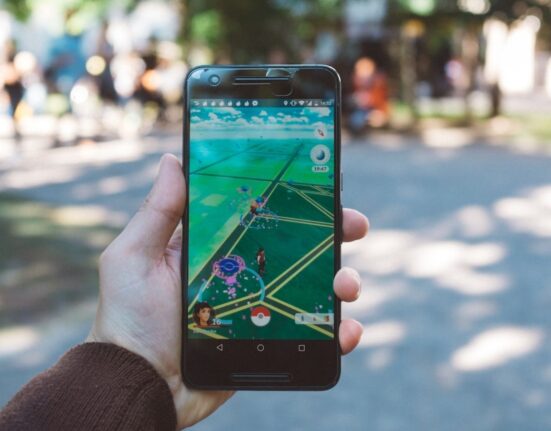The dynamic landscape of digital marketing is ever-evolving, and among the latest trends that have captured marketers’ attention is Augmented Reality (AR). This innovative technology is reshaping the way brands connect with their audience, offering an immersive and personalized experience that goes beyond conventional methods. Let’s delve deeper into the realm of Augmented Reality Marketing, exploring its benefits, applications, and the promising future it holds.
What Is Augmented Reality Marketing?
At its core, Augmented Reality Marketing involves the integration of AR technology into marketing content. It’s more than a tool; it’s a strategy that adds a personal touch to customer interactions, creating a memorable and engaging experience. Unlike traditional approaches, AR marketing allows brands to connect with their audience in a way that stimulates multiple senses, fostering a stronger emotional bond.
Benefits of Augmented Reality Marketing:
- Promote Effectively:
Augmented reality transforms advertisements into immersive and effective experiences, enhancing brand promotion. The dynamic and innovative nature of AR ensures that ads leave a lasting impact, ultimately driving sales and revenue.
- Widen Reach:
AR-based advertisements possess a unique appeal that captures instant attention. Brands can create dedicated campaigns tailored to specific goals, and the ease of application combined with high appeal ensures these ads reach a broader audience.
- Create Buzz:
While AR applications initially focused on direct sales tactics, modern AR marketing strategies contribute to brand identity and exposure. Satisfied and entertained customers are more likely to engage with brands, creating a buzz in the competitive market.
- Deliver Experiences:
Augmented reality marketing facilitates interactive and immersive experiences. For instance, shoppers can use AR to access sale prices, discount coupons, and product recommendations, enhancing their decision-making process.
Guide Purchase Decisions:
The interactive nature of AR helps marketers create engaging content and measure customer engagement rates. Brands utilizing the latest technology become preferred choices for shoppers, offering them a unique and personalized shopping experience.
- Save On Marketing Costs:
Contrary to the misconception that advanced technology tools are costly, AR-based ads are cost-effective compared to traditional media. The targeted and personalized approach of AR marketing also contributes to significant savings in advertising budgets.
- Boost Sales:
Augmented reality marketing captivates viewers, increasing brand recall rates and generating curiosity and hype around products. This unique approach increases the likelihood of converting viewers into potential customers, thereby boosting sales.
- Reduce Returns:
AR marketing enables businesses to create campaigns that provide comprehensive information to audiences, reducing uncertainties and minimizing product returns. Informed and confident customers lead to improved retention rates.
- Overcome Barriers:
Visuals have a universal appeal, overcoming language barriers to reach global audiences. Augmented reality’s visual advantage communicates messages through moving images, making information accessible and engaging for diverse audiences.
- Boost Social Media Marketing:
AR has the potential to make content go viral on social media. Its exciting and compelling nature attracts target audiences, conveying brand messages effectively. Engaging AR experiences encourage users to share their interactions, creating a ripple effect across social platforms.
- Better Customer Service:
AR technology plays a crucial role in educating customers in a fun and interactive manner. By guiding customers through virtual experiences, AR helps them make informed purchasing decisions, ultimately improving customer satisfaction.
How To Use Augmented Reality Marketing?
- Augmented Branding Material:
Elevate traditional branding materials like brochures and business cards by embedding virtual components. Users can scan printed materials with their smartphones to access additional information and features, enhancing engagement.
- Trying Before Buying:
Overcoming the limitations of eCommerce, AR allows customers to virtually try on various products, from clothing to makeup. This eliminates the need for physical interaction, providing a convenient and immersive shopping experience.
- Augmented Touring:
Businesses can add a digital component to physical products and facilities using AR. Users can scan an object to gain a virtual experience, educating them about a product or brand-related experience.
- Experiential Marketing:
AR can be employed as a unique marketing strategy to break attention barriers, increase brand awareness, and build traction. Fun and surprising AR experiences create a buzz around the brand, sparking conversations and social media engagement.
Future of Augmented Reality Marketing:
The inception of augmented reality marketing coincided with advancements in technological infrastructure. As businesses continue to adopt AR technology, it is poised to further enhance online shopping experiences, making them more convenient and personalized.
The anticipated growth of the AR market, projected to reach between $70-$75 billion by 2023, reflects changing customer behaviors and evolving expectations. Gen Z and millennials, in particular, express a keen interest in interacting with products virtually before making purchase decisions.
The future promises advancements that aim to reduce returns by providing real-time glimpses of product sizes, allowing users to visualize how products fit into their lives. Already, eCommerce stores are investing in Virtual Try-On technology, particularly in the fashion industry, where customers can virtually try on clothing and accessories before making a purchase.
In conclusion, augmented reality marketing is at the forefront of exciting technological advancements, offering a glimpse into a future where personalized and immersive experiences will redefine how consumers interact with products and brands. As businesses continue to embrace AR, the digital landscape is set to undergo a transformative journey, ushering in a new era of engaging and interactive marketing. Get ready for the augmented reality revolution!



